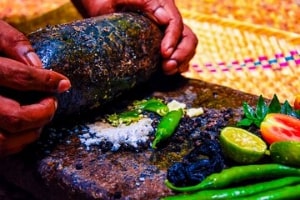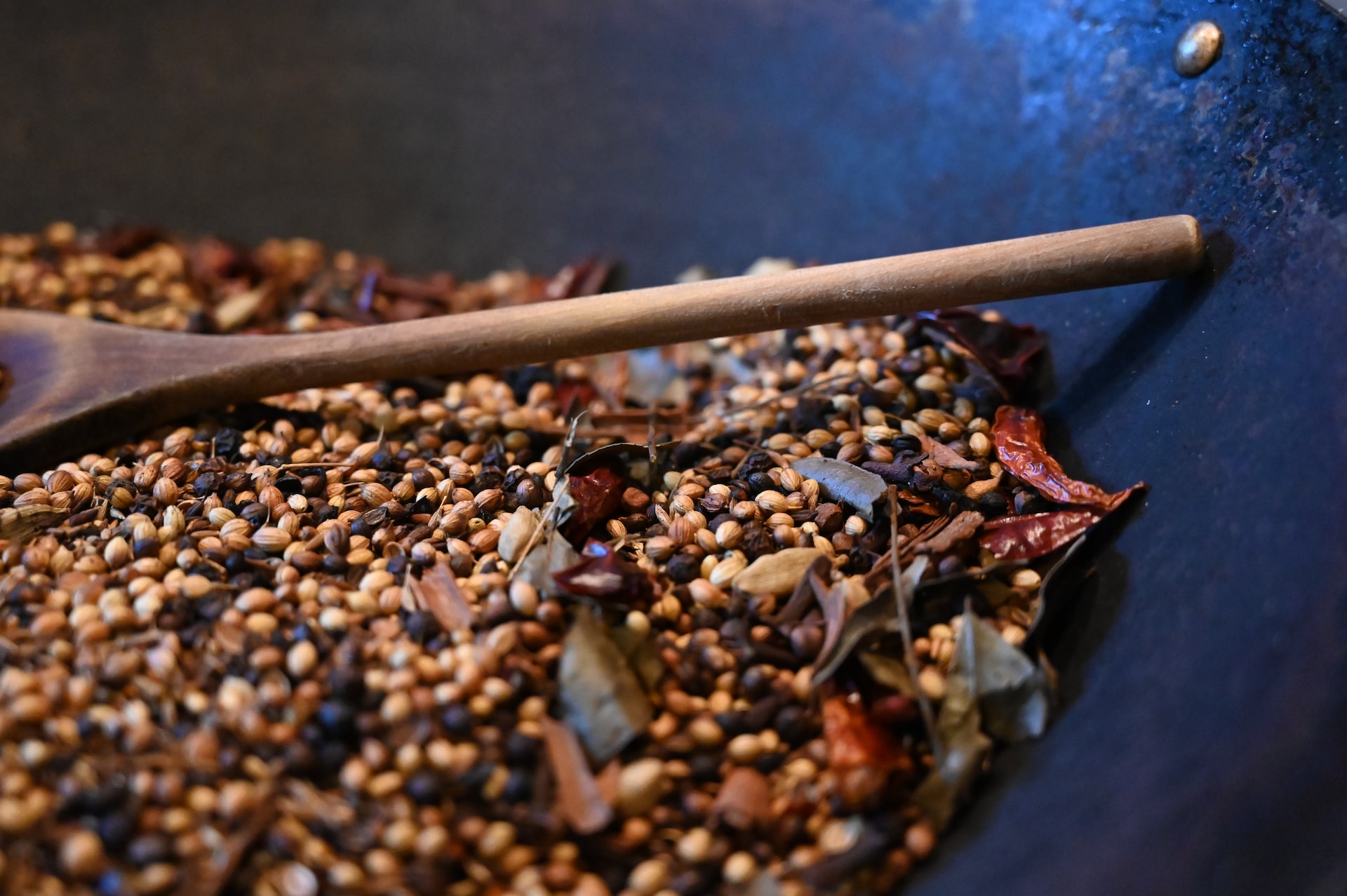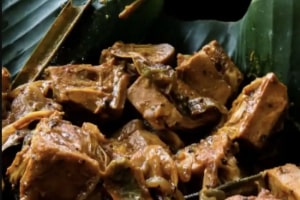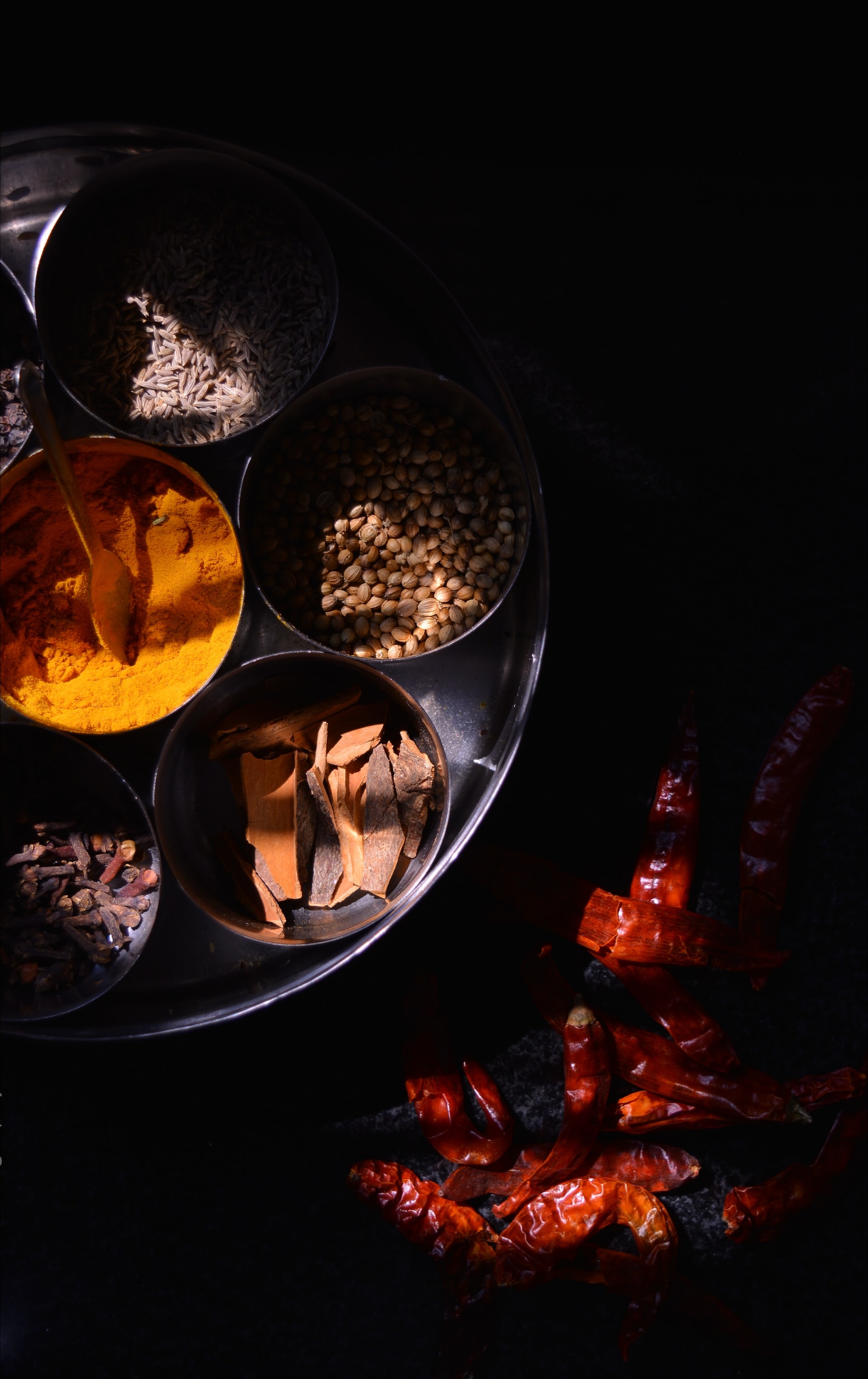Sri Lankan food
The Paradise Island of Sri Lanka is today a reflection of colonial past. From Dutch, Portuguese and British colonizers, to Arab, Malay and Indian traders and merchants, Ceylon has been a timeless destination because of its Central hub location and vivid local spice culture.
In Sri Lanka, each dish has its own story, entwined with the history of the country and its people. Pretty much all the food items can trace their Origins back to either one of many ethnic groups or neighboring countries.
During early Sri Lankan history the diet consisted of cereals, grains, beans, pulses, honey vegetables roots and fruits. Meat was in the form of game meat that was marinated and skewered over open fires. The means of our ancestors were mainly based on rice.
With passing of time it's coconut ghee and other milk products along with sugarcane molasses and oil were included in addition to fish both from sea and inland waters.
According to historical references the island played host to some 200000 tanks and reserve wires that in turn nourished some 317 kinds of paddy and serials such as sesame, green gram, millet, Kurakkan, thanahal, undu, gram, dhal and cowpea that all cultivated in Chenas (shifting cultivation ).
Items such as bathala, kiri ala, jackfruit, manioc and breadfruit were digested with the aid of herbal based beverages such as Beli, Polpala, iramusu and ranawara. Sweets were made with treacle, not with refined sugar.
Rice bowl of Asia
Ancient rulers of Ireland of Ceylon were in renowned for their hydro engineering skills that empowered the island to become a leading producer of rice. As such this daily staple became positioned at the very heart of Sri Lankan cuisine.Today the island grows some 15 varieties of rice.
In ancient Sri Lanka, there were a number of methods in relation to preparing rice they can be identified as rice gruel, milk rice, tempered rice, ambul bath, cooked rice with bee honey, cooked rice with ghee and cooked rice with spices.Among the other types of cooked rice, rice mixed with cereal, tempered rice with vegetable, rice kept in water and mixed with onion, chillies, coconut milk, lemon juice, salt water etc.Yellow rice ,Rice mixed with green gram, agiti halrice and kudu bath were important.
The kings had offered milk rice to Buddhist priests and even today it is a meal with high cultural value. Rice and curry was eaten for both lunch and dinner and breakfast consisted of heel bath or diya bath and boiled rice with kiri hodi (coconut cream) or pol sambol (coconut sambol).
All three meals by Sri Lankan were based on rice. The Morning Meal consisted of preparations of rice flour, Such as hoppers ,string hoppers, pittu, roti and the midday meal and the night meal consisted of rice and curry.
Such an association with rice is very much evident in the many recipes that feature the use of rice flour. When asking if one has had a meal, the literal translation of the question when asked in sinhalese is “have you eaten rice?” such is the staple of this diet .
Sri Lankan food today
Modern Sri Lankan foods and evolution and reflection of the island’s glorious past . Taking inspiration from the ancient Kingdoms of yore, Oriental traders (Indian, Arab, Malay, Moor) South Indian provinces and more recent colonial occupiers; the British, Dtutch and Portuguese, modern Sri Lankan quizzn is today a combination of the best b of each of the sinhalese, Muslims, Tamil and Veddha cultures.
Regional styles
Sri Lanka has a rich heritage of indigenous dishes and its regional cooking is strongly individual and varied. From Kandyan Sinhalese styles featuring the cream of hill country vegetables, to Coastal cooking using the bounty of the ocean, to Tamil cooking that shares links to Southern Indian and is very much prevalent in the Northern regions of Jaffna.
Secret recipes
The best tasting Sri Lankan foods and their creators have one thing in common, secret recipes. Over time, these sacred details have been passed word-of-mouth, from generation to generation. Each particular region or province will have their own unique and distinct method of preparing the same dish making the most of local ingredients available.
Bit of this and that
With no strict following of a measuring system, village cooks will often indicate how much of an ingredient is needed by bringing their hands together and say “this much”. Other housewives can be heard saying a pinch of this, a handful of that, a good swirl of salty water: test, consider, adjust, seasoning “a little, a few” or “a fistful” .
Cooking in most Sri Lankan households is, when possible, a family affair. Expect young children to be in and out of the kitchen as the meal is slowly prepared. The mother will ask someone to cut the onions, another to measure and wash the rice and when the meal is nearly done, mothers can be heard slapping the hands of those same kids as they try and sneak a stealthy bite.
The sight of birth parents and grandparents cooking together is a plentiful one as they laugh, chat and keep themselves occupied whilst preparing the meal. The sight of someone spooning some curry with a coconut shell spoon and dabbing it on the middle of the palm to taste is commonplace. Knowing when the dish is “done” is an art that comes with time and experience.
Sri Lankan taste
Tropical Sri Lankan cuisine comes alive with a myraid tastes, flavors and textures. Diner can expect a jaw twisting collision of sweet and sour, bitter and spicy, salty and pungent all in one sitting. Such variation and flavourful taste is attributed to the various spices used in preparation of each dish.
Spice Fantasy
The island of Ceylon and its strategic location made it a destination and transit point for traders, merchants and explorers since time immemorial. The tropical lowland climate of the isle of Ceylon empowered it to produce some of the finest spices on earth. A bounty of natural taste and flavor made Ceylon a magnet known for its precious and rare exotic spices.Oriental Spices are world renowned for their instant ability to enhance the color, fragrance and flavor of food. Used in the right combination, spices can turn the simplest of food into an aromatic and rich dining experience.
Sri Lanka has long been renowned for its spices. The best known is cinnamon which is native to Sri Lanka. Traders from all over the world came in search of fragrant and aromatic cardamom, cloves, nutmeg and cinnamon. Some of these traders settled on the island, and the recipes of their countries were introduced to Sri Lanka, resulting in a delightful blend that gives richness and diversity of indinenous cooking.
Spice and ivory traders from all over the world brought their native cuisines to the island, resulting in a rich diversity of cooking styles and techniques. In Sri Lankan cuisine, spices not only add flavor, but provide health benefits with their antioxidant properties. For example by using fenugreek, a spice with a very distinctive flavor, the appetite is said to increase. Fenugreek is also known to aid digestion, as well as alleviate excessive vata (air) and kapha (earth) conditions.
Black pepper was one of the most commonly used spices before numerous types of peppers and chillies became commonplace. Spicy black pepper curries are still to be seen on dining tables across the island. Today the cuisine is highlighted by a liberal use of different variteis of ranging hot chillies such as amu miris, kochchi miris, rathu miris and maalu miris (capsicum).
Curries
Sri Lankan curries are not necessarily classified according to the main ingredients but rather according to the type of cooking and Spice of color. White curries a based on coconut milk and usually mild. Red curries use large amounts of chillie powder and a few spices These ground chillies give the curry its vivid color and fiery flavor. Black sarees a very typical of Sri Lanka and obtain their dark tones via a combination of coriander, cumin and fennel, that are roasted to a rich coffee brown. Pepper curries use freshly ground pepper instead of chillie.
Good curries are everywhere in Sri Lanka, from roadside cafes to hotel buffets and everywhere in between. Diners can expect anything from fleshy jackfruit and okra, to exotic nake beans, banana blossom and sweet-and-sour eggplant. In Sri Lanka, fruits are often made into curries for example mango, pineapple and amberella (golden apple). “Tempered” curries feature a “tempered” mix of spices. As such, curry (veg or meat) is a versatile dish that can be prepared to suit individual tastes and made as mellow or as spicy as desired.
Hath Maluwa
A mash up of excess or leftover vegetables, tastes, colors and aromas. The hath maluwa often sees a minimum of seven vegetables prepared with the full flavor and taste of spices and condiments including garlic, ginger, green chillies, pandan leaves, coriander, fennel, cumin and curry leaves. Also thrown in are flowers, leaves and fruit seeds! A vegan wonder! Hath Maluwa is a regional specialty and each province will have their own distinct style of cooking this dish for example the uve hath maluwa from the Uva Province etc.
Meats
Chicken, pork, mutton, beef and lamb can be found around the island with the preparation varying. Negambo Pork Stew with Liver and Batticaloa Mutton Curry are firm favorites with pork (always cooked with all the fat left on) being prepared across a number of regional styles: in every color from light yellow to a black.
Devilled Delight
Meats are also popularly prepared as devilled items. Ideal for a drinking session as “bites”, devilled dishes are cooked using a thick, spicy sauce combined with chunks of onions, capsicums and tomatoes. The chillie used is thought to match the strength of the sprits being consumed.
Etiquette
A little word on the etiquette of eating in Sri Lanka. Always wash your hands before you eat (for the sake of courtesy as well as hygiene) and always use your right hand to give and to receive. if you’re invited home for a meal, remove your shoes before entering the house. Because let’s face it, once you have tasted Sri Lankan home cooking, you will want to be invited back, right?
Off the leaf
Prior to the arrival of the Portuguese, a majority of islanders would partake meals whilst sitting on the floor using their hands and eating off plantain leaves. According to the traditions of the Central Province, the broader side of the leaf is to be placed to the right, since most of us use our right hands and it would thus be easy to eat from the wider end. The tip of the leaf would be to the left of the person eating so that the white tender part of the leaf will be outward and slightly green part inward. This practice changed when the Portuguese introduced the table to the Sinhalese culture. Thus all meals began to be taken at table, alongside other Dutch and Portuguese contributions such as cups, plates, glasses, forks and spoons.
Healthy Eating
Traditionally food was taken not only to satisfy nutritional demands but also for therapeutic/ healing purposes. Sri Lankan vegetables. Spices, leaves and herbs are superior at helping to improve longevity. Pretty much anything from heart disease and diabetes to cancer and infertility can be cured or managed with s struct diet of Sri Lankan foods.
Kola kenda, the famous herbal porridge is one of the biggest contributors to healthy living. This tonic in a bowl, does a number of miraculous things such as improve circulation, eyesight, digestion and appetite. Kola kenda rejuvenates and refreshes the body, providing an all in one dose of healthy living in a bowl.
The numerous types of green leaves used in mallum ( green leaves shredded and mixed with grated coconut often semi fried) are also said to be extremely medicinal with enhanced vitamins and minerals, served up in a fresh tropical salad.
Food of the Gods
Food is considered a sacred part of Sri Lankan culture. Food in the form of offering play a major role in the local culture. Very often all cades, restaurants and wayside eateries (cyver kade) will serve up into a tiny bowl a bit of each of the item in the day’s menu. This bowl is then offered to the God and it can be seen in most shops alongside a God’s statue and an oil lamp.
Desserts
Sri Lankan desserts are unheard of expect during festive or special occasions. The most Sri Lankan dessert is curd and honey, drizzled with plenty of treacle. Sri Lankan sweetmeats are often consumed as desserts, however today’s modern menus include a plethora of Western inspired cakes, confectionery, puddings and sweets.
Betel
Without a cup of water a meal is not considered complete. After a meal, traditional villagers prefer to chew betel leaves with areacanut, lime (chunam) and tobacco, said to aid digestion and prevent stomach disorders.
Sweetmeats
Most often a feature of the Sinhalese and Tamil New Year dining table sweetmeats are very popular in Sri Lanka. A cast range of preparations using ingredients such as coconut, wheat flour, and treacle are very common. Some sweetmeats are complex to prepare, however their exotic appearance and taste makes the effort worth it.







